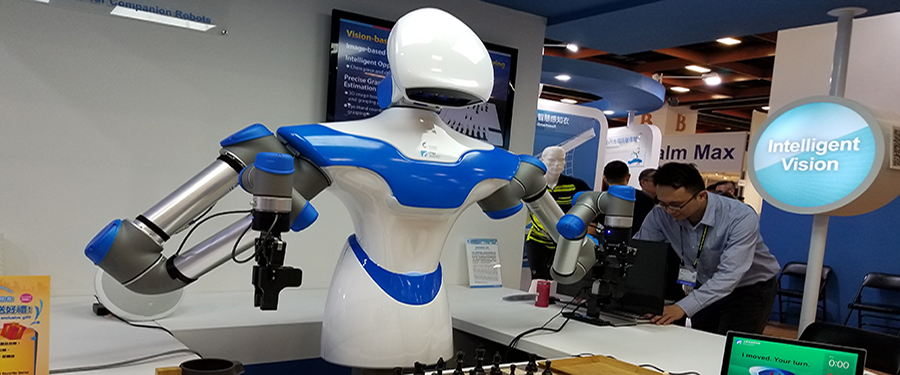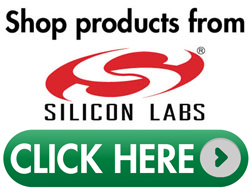- Home
- Symmetry Blog
- From Silicon Labs: 5 Trends for the Smart Home from Computex 2017
From Silicon Labs: 5 Trends for the Smart Home from Computex 2017
About Symmetry Electronics
Established in 1998, Symmetry Electronics, a Division of Braemac, is a global distributor of electronic components and systems. Combining premier components and comprehensive value-added services with an expert in-house engineering team, Symmetry supports engineers in the design, development, and deployment of a broad range of connected technologies.
Exponential Technology Group Member
Acquired by Berkshire Hathaway company TTI, Inc. in 2017, Symmetry Electronics is a proud Exponential Technology Group (XTG) member. A collection of specialty semiconductor distributors and engineering design firms, XTG stands alongside industry leaders TTI Inc., Mouser Electronics, and Sager Electronics. Together, we provide a united global supply chain solution with the shared mission of simplifying engineering, offering affordable technologies, and assisting engineers in accelerating time to market. For more information about XTG, visit www.xponentialgroup.com.

Jason Rock, a strategist at Silicon Lab's IoT division, recently attended Computex 2017 in Taipei and shares some of the key take-aways from the event.
I was excited to be coming back to Computex after a several year absence because unlike CES, this event is about technology companies showcasing their offerings to each other rather than to end users.
Here’s a look at the five trends I noticed:
- Multi-protocol smart home devices
- Certifying for multiple ecosystems (Amazon, HomeKit)
- Emergence of IoT gateways
- Security and regulatory compliance is a default requirement
- Partnerships are critical for success
Multi-protocol Smart Home Devices
One of the barriers to mainstream IoT adoption is the numerous wireless protocols being deployed: Bluetooth, Thread, Wi-Fi, zigbee, and z-wave. At the event, manufacturers were asking for support of these protocols on single radio chipset. While some believe that these protocols will converge down into one predominate standard. If you look at the evolution of the mobile phone you will notice a trend that counter this prediction.
There was a time where standards such as CDMA, GSM, and LTE along with differing carrier frequency spectrums kept phones limited to specific networks. As telecommunications evolved, what actually happened is the phones themselves were designed to communicate to these protocols, thereby allowing them instead roam across these varied mobile networks. In many respects IoT will likely follow the same path. End device manufacturers are adding radios from vendors such as Silicon Labs which can support multiprotocol communication. We are now seeing Bluetooth commissioning support being integrated into devices such as media hubs, light bulbs, and even smart plugs. These devices either switch protocols via power-cycling or can simultaneously support Bluetooth and another protocol such as zigbee dynamically with a single radio transceiver by time-slicing between protocols.
Supporting multiple protocols makes device commissioning simpler with a mobile phone’s Bluetooth connection. Over time, the devices themselves will be able to adapt their protocol to an intended IoT ecosystem.
Certifying for Multiple Ecosystems (Amazon, HomeKit)
Though in the short term, even with devices being able to speak in various protocols and hubs now being integrated into gateways, today in order to leverage the latest voice platforms, device manufacturers need to build devices and go through a certification process with the key voice intelligence providers. In response, semiconductor providers are supplying ecosystem software development kits and user guides to help accelerate this development process.
Emergence of IoT Gateways
As the IoT continues to expand, the popular IoT radio protocols will be internally supported within everyday gateway platforms. We’re beginning to see an increase in requirements by device manufacturers for the integration of IoT radios into platforms that were strictly using Wi-Fi for wireless communication. Those small protocol bridges and hubs one needed to connect zigbee lights onto one’s home network are now being integrated into the latest WiFi mesh platforms such as Samsung Connect Home TM and are being integrated into internet access modems from service providers such as Comcast’s newest XB6 platform. As these 2.4GHz radios become tightly co-located into a single platform, manufacturers are utilizing managed wireless coexistence algorithms to ensure each radio has access to the shared frequency spectrum. This helps prevent the possibility of high-speed video streaming of one’s favorite show impacting the ability to adjust the smart lights from their mobile phone while on the couch.
Security and Regulatory Compliance is a Default Requirement
Thanks to recent regulatory oversight, manufacturers can no longer ignore security vulnerabilities and further must prevent users from modifying antenna transmit levels beyond tested levels. In turn, these manufacturers are turning to their suppliers to ensure their features meet these strict requirements.
As examples: the U.S. Federal Trade Commision (FTC) has gone after device manufacturers of gateways for not having adequate security. Additionally, in recent news the U.S. Federal Communications Commission (FCC) has withheld certifying products that allow end users the ability to bypass tested transmit level settings set at the factory. The results of these actions have come in the form of fines, negotiated settlements, and delays in receiving regulatory certifications.
Partnerships are Critical for Success
Even today, providing a complete IoT ecosystem from device-to-cloud is still too hard for a single company to deploy. As result, it requires platform vendors being open to allowing devices from one another manufacturer to gain entry onto their platform through tested and assured compliance.
In turn, a platform vendor will then work with ecosystem providers to enable cloud services such a voice intelligence (Amazon, Google to name a few). And further, we’re seeing cloud services cross-license access to each other’s device data to provide their customers a richer user experience with their IoT devices.
I believe these trends indicate that today’s IoT products are within reach of a larger mainstream market. With this realization in mind, I’m looking forward to seeing what Computex 2018 has in store.
Contact Symmetry Electronics at 866-506-8829, email us or start a live chat and we'll be glad to help you with your projects!


